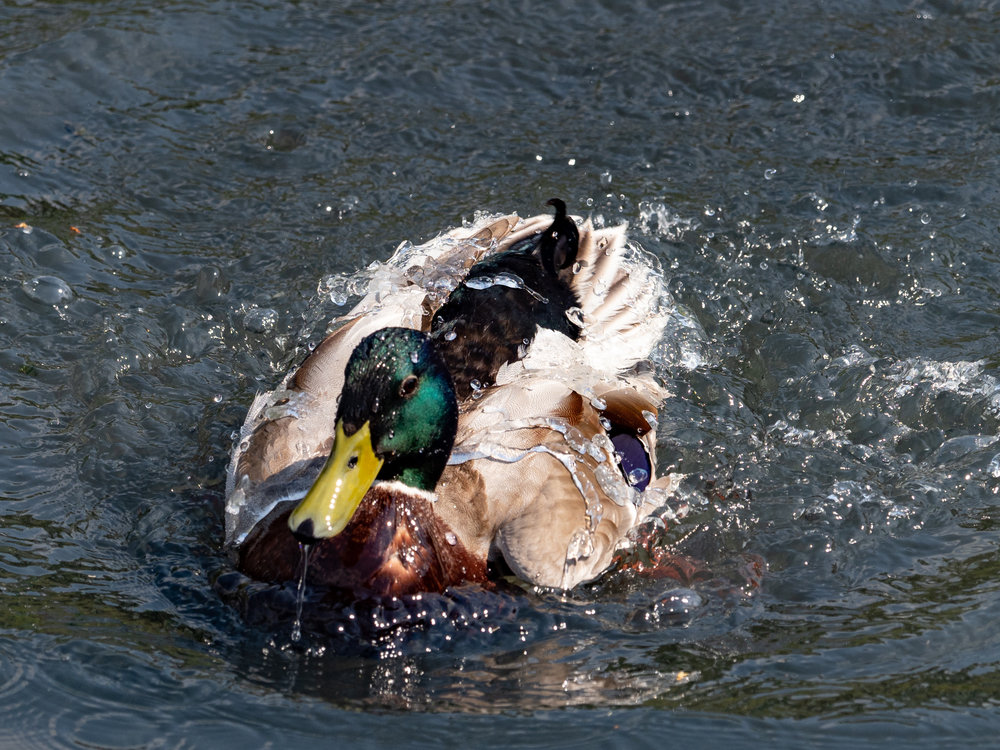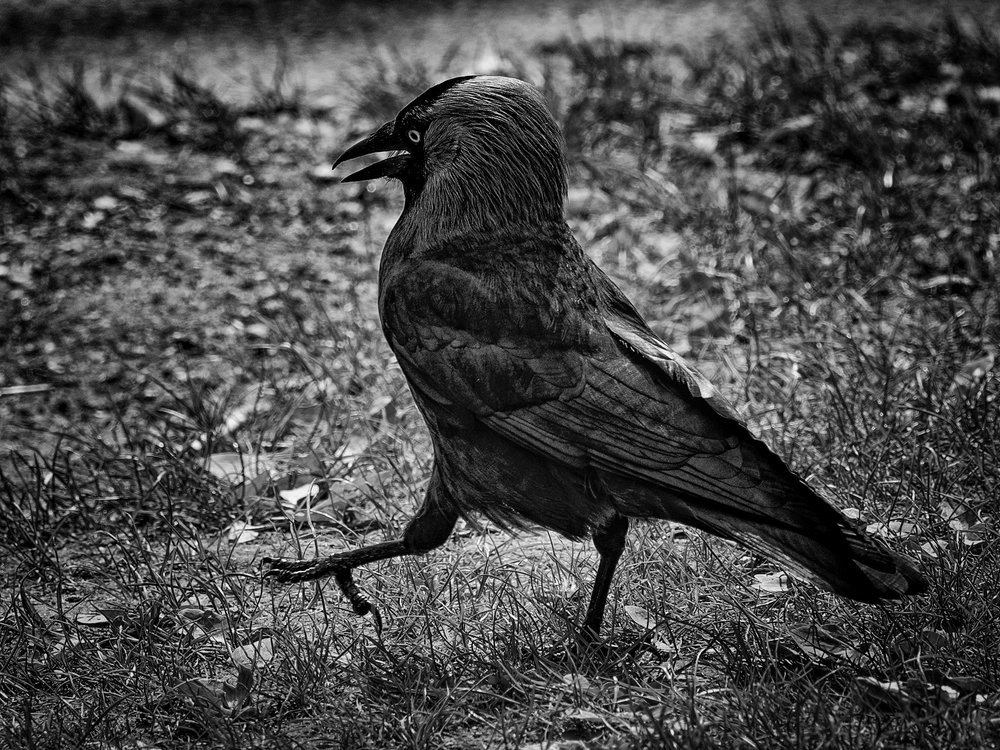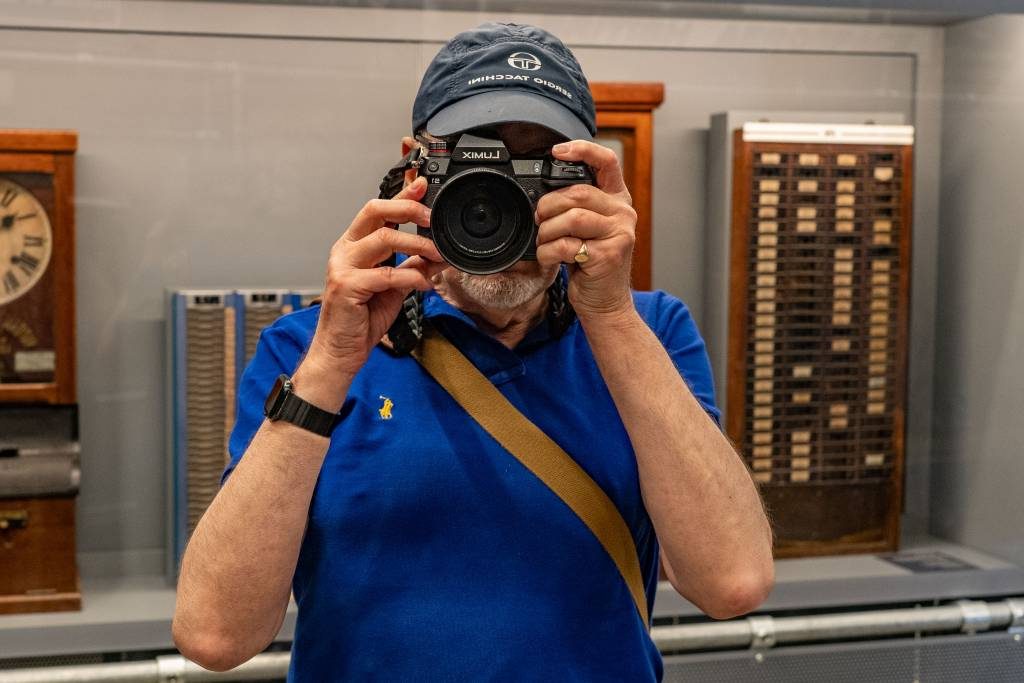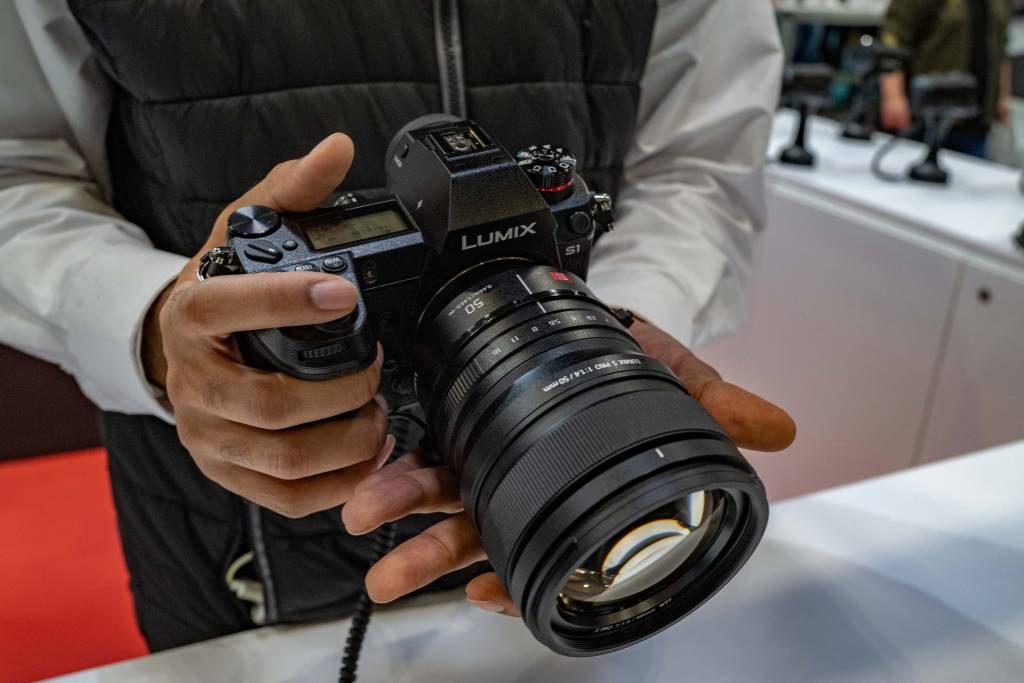Is optical image stabilisation essential to the success of a camera or lens in 2019? It ought not to be, but potential buyers now live very much in the world of feature box ticking. They might not particularly want or need a feature, but if it isn’t there then they are reluctant to buy and will look elsewhere. It’s as simple as that. It’s this attitude that leads to feature bloat, and it’s one of the primary reasons why I still cling to “simple” cameras such as the Leica M10-D or, even, the Q2. But manufacturers are now pressured into adding features simply to keep up with the competition.

Many buyers clearly do believe stabilisation is a must-have feature. In the long list of technological tricks which are now regarded as essential for any camera or lens, optical stabilisation is a vital component. We all know it isn’t necessary to have stabilisation to create good photographs. But it may be necessary to feature stabilisation in order to encourage the mainstream buyers to part with their cash.
Reduced image quality
Some would argue, with good reason, that even optical image stabilisation has the effect of reducing image quality. This is certainly the case with digital stabilisation options which you can often find hidden in the menus. Most photographers never use digital stabilisation, although they have fewer qualms when it comes to optical stabilisation.
Equally, though, others leave optical stabilisation switched on permanently and not just when necessary. Leica addresses this dilemma with the Q2 which has a stabilisation auto mode — it switches itself on only when the exposure is longer than 1/60s. We can infer that at higher speeds this 28mm-focal-length camera doesn’t really need stabilisation and that it might, in fact, detract from image quality. However, as my friend Jonathan Slack points out, you can switch off in-body stabilisation but you can’t make the sensor fixed.

Dilemma
DPReview has neatly summed up the dilemma facing both manufacturers and reviewers. Is the lack of optical stabilisation really such a negative factor? After sitting on the fence for years, DPReview and has come out firmly in favour of stabilisation being essential. The lack of stabilisation is now seen as a definite con, far from being a pro or, even, a neutral.
Stabilisation, either in-lens or in-body, is rapidly becoming a feature that is essential to the success of a camera system. Oddly, this comes at a time when high ISO performance is improving generation by generation. You could make a case for stabilisation

Body or lens
There is a difference of opinion among manufacturers as to whether stabilisation is better deployed in the lens or in the body, but major players offer both, with lens and body stabilisation cooperating to offer up to a six-stop advantage. This enhances the ability to use slower speeds in poor light, thus reducing reliance on other aids, such as higher ISO settings, which definitely do affect image quality. And, no dispute on this one, stabilisation is essential when using very long lenses.
While Leica has acknowledged the reality in the SL system by equipping the SL zooms with stabilisation, it has not yet adopted in-body stabilisation in any of its German-made system bodies. The fixed-lens Q2, which is not a system camera, is the exception and, perhaps, is the sign of things to come.
Lumix S1 example
The situation will almost certainly change when the SL2 arrives. I would be surprised if it didn’t offer a similar in-body system to that we have seen in the Panasonic Lumix S1 and S1R. In fact, I think we will also see IBS in a future CL2, although that camera is probably a year or two away. After all, in-body stabilisation is there to assist those lenses, including M lenses, which do not have stabilisation. M lenses are in wide use by owners of the SL and CL and many would welcome stabilisation.
The APS-C lens range from Leica is unusual, offering a selection of excellent lenses but without stabilisation. Back in
He is perfectly right, of course. Optical stabilisation systems add both size and weight (can use more power, incidentally). But does the average buyer understand this? Or even care? They want to tick those boxes and, if stabilisation is missing, attention is now likely to wander in the direction of alternative systems. I suspect it is one reason why the CL has not been as successful as it deserves, for it is a lovely little camera.

Times they are a-changing
To some extent, the decision to go without stabilisation was logical back in 2012-2014 when the T lenses were designed. The T system would have been bigger overall if stabilisation had been added. And at the time stabilisation was not such a big issue in marketing terms. Generations of Leica M photographers had managed very well without stabilisation and there was apparently no great demand for it. At that time.
Times change. From now on, a lack of stabilisation will be seen as a negative factor, as DPReview has now made clear. For better or for worse, buyers will shy away from systems that do not offer these aids.

Leica could retrieve the situation by adopting in-body stabilisation in a future CL, thus giving the existing lens range a longer, but limited lease of life. Perhaps the slight increase in body size that would be necessary will be a good trade-off.
But at some stage, the bullet will have to be bitten and Leica’s APS-C zooms, like their full-frame SL zooms, will have to be redesigned to bring in stabilisation.
DPReview: We take a stance on in-body stabilisation


A bit of a late comment, but I’m a ‘one stop of stabilisation per flat white’ kind of guy. Just sayin’ 😉
Ah! And a cappuccino?
I almost never actually work – but I’ve done two weddings in two weekends (knackered frankly). I used the SL, the M10 and (slightly) the Panasonic S1. Maybe out of 3000 shots 5 were spoiled by cameras shake (but they were all covered by other shots). I don’t think any were spoiled by exposure mistakes.
I think the box-ticking is really sad, I’d rather have a simple camera which allows you to make an occasional simple mistake as opposed to a complicated one which doesn’t . . . But does allow you to get completely confused because you pressed some button you didn’t even know existed.
I’m afraid that the TL lenses – especially on the CL are prone to my personal inability to hold my breath and shoot at the same time – a solution also suggested by my cadet corps instructor and my father – so the stabilization afforded by the S1R is welcome – especially for the 55-135 – your steady hand in that example is to be admired Mike!
Sadly, Tony, the hands holding the 55-135 were much younger than mine. Ken, who took that shot with the CL is 26. I have the same problem as you.
I think a lot of the checkbox buying is fueled by incompetent reviewers such as DPreview. The reviewers will home in a spec that is even marginally lower in reality than a competing model and make a big deal about it. They also judge cameras and glass for applications they were not intended. A great compact lens with lovely rendering will get trashed because it is not f/0.95. I remember Ming Thein commenting a long time ago that he only carried one Otus on an outing even though he owned a number of them due to size and weight. Virtually every new lens getting announced today is getting a fast and faster aperture; and less and less practical, and not adding to joy of photography for most images. The market is shrinking and most manufacturers are investing in out check listing each other in a diminishing market. A lot of competent enthusiasts and professionals want cameras that are intuitive and have great haptics and more f/2.8 primes that have Otus quality in a compact size. The manufacturer that figures that out will win in the long run in my view.
Good points. Beyond rangefinder camera lenses being relatively small, I think it is an advantage of the Leica M system that there is good selection of lens maximum aperture — the core ranges of Summilux, Summicron, Summarit, along with some faster (Noctilux) and slower (Elmarit, Telyt, Elmar, Summaron), . The 2017 Leica M-System brochure has a really nice presentaton of the lenses, with a chart and then groupings per page by range, that really give a nice visual representation of this versatility.
I am not personally interested in in-body stabilisation systems — or even in-lens stabilisation systems for the most part. It is just more moving parts and electronics for potential problems. Besides in-lens stabilisation for some systems, it is stlll not seen as a necessary feature on many professional systems, whether they are still image or motion picture. For example, Leica M & S, Hasselblad H & X, Phase One XF, Arri Alexa & Amira are all without stabilisation features. I can understand the usefulness in certain circumstances (the difference between a usable image or not in difficult conditions in wildlife photography, etc.), but mostly I would still prefer a system without such features.
Stabilisation is an incredibly useful tool for any sort of travel camera system. When you need it, its absence can only be covered by a tripod, or faster shutter speeds/iso. Both of which are sometimes impossible or unwanted. A landscape targetted camera? I wouldn’t be fussed. But an everyday, do everything, go anywhere camera? I’d want it available for sure. Preferably on-body so that any lenses benefit and smaller lenses can result.
The other often overlooked advantage is in composition and framing, especially at longer focal lengths. The rock solid viewfinder view on something like the Olympus and Panasonic bodies is quite eerie, but very useful, when trying to compose precisely handheld with a 300mm equivalent focal length.
Would I still buy a camera without it? Maybe. I have a Fuji X100 that lacks it. But in dim interiors, museums etc I find myself valuing ibis far more than slightly better iso performance. It’s an excellent shooting tool and increases a cameras flexibility. In shrinking markets, that’s an important advantage to have.
As always we must bear in mind that what is being discussed here are two only slightly related hobbies. One is photography, the other is shopping. Most people (including myself – I’m not preaching here) who believe they are engaged in the former are actually mostly indulging the latter. Cheers, Patrick
Very true
That’s it in a nutshell. Buying a new camera does not make a photographer any better. I still think that the S1 +50mm f 1.4 is a ridiculous size. You can get a much smaller camera to do the same thing, but what camera you use is generally irrelevant to the overall result. I am sure, though, that a lot of photographers said in 1932 that the built in rangefinder with ‘automatic focus’ would never catch on.
William
When the Leica II Model D was introduced in 1932 with a built in rangefinder it was said to have ‘automatic focus’. Was this ‘feature bloat’ ? 87 years later we still have cameras with those features eg. the M10. Does feature bloat really matter today in a market which is declining sharply? Phones now have more features than the cameras they are replacing, whatever David B. might think about the image quality available from phones. I am confused about the plethora of cameras David is bringing to a course in Greece, or is he setting up a second hand camera business there? Perhaps there is an explanation that I have missed or is this just irony?
Years ago my father told me that an intake of breath and elbows into my body before taking a photo would eliminate camera shake. I am now much older than my father was when he gave me that advice and I suffer from arthritic issues, particularly in my left hand. With digital cameras of whatever make I can use the auto ISO feature with minimum speed parameters to suit the lens I am using. I have been using a camera with IBIS for the last 6 or 7 months. Have I noticed any difference as result of that? The answer is an definite ‘no’, although I am pleased generally with the camera. As for that ridiculous S1+ 50mm f 1.4 combo shown above the only analogy I can use is to say that it is like using a 10 ton truck to do the weekly grocery shopping for an average family. Somebody needs to think again before cameras follow the dinosaurs into extinction.
William
Don’t be confused about the plethora of cameras I’m taking, William: I forgot to mention that I’m teaching a course, so I want everyone who comes – usually with a phone, or with an APS Canon SLR and its original kit lens which they’ve never thought to take off and replace with something else – I’d like them to try, first hand, other kinds of cameras and lenses, so that they can see for themselves what are the strengths – and weaknesses – of them all.
The course isn’t about ‘shopping’ ..it’s about using a camera – any camera – to realise (er, sorry, “realize”) pictures of what’s in your own head, and not to just take a copy of what’s in front of the lens. Here’s a taster (if you copy and paste this web address: tinyurl.com/y4w8df6r ) ..we’ll be jumping off walls while a camera with a self-timer takes our picture ..to see how different shutter speeds blur our jump, or freeze (sorry; “freese”) us in mid-air, and suchlike.
We’ll be taking pictures, above all, of “intangibles”: joy, persistence, scale, imbalance, etcetera, to see how we can infuse photos with our own thoughts and ideas, rather than just using a camera as a portable Xerox machine.
But I’m really confused about your “..intake of breath and elbows” into your body (sorry, “booty”) William. Your elbows? Someone else’s? ..A passer-by’s elbows?
Best wishes,
– David.
Freese? Where did that come from? It isn’t in the Macfilos Style Book.
Correction: “infuze”.
You hold the camera to your eye and, as you do that, you push your elbows into your chest and take a breath as you take a shot. According to Dave this is how army snipers operate, so I am in good company. In built stabilisation can work to a degree, but it cannot, for instance, deal with subject movement if the subject is not followed or if the shutter speed is too low to freeze the action. Thankfully, there are some things which the camera cannot do on its own. I see way too much nonsense about profiles, presets in Lightroom and histograms (I have never had the need to use histograms as I trust my own eyes – to my mind they are there only because a digital camera can produce them) etc, etc, none of which are absolutely necessary for taking good photos. I take digital photos into Lightroom and use my own eyes and instincts to process photos. I do the same before I take a photo by making a few minor adjustments for my day’s shooting involving ISO and minimum shutter speed. A lot of the denizens of digital photography fora sound like spoiled children looking for more ‘sweeties’ rather than people who have actually mastered their craft. If you have not done that no amount of camera features will improve your photography. Using camera features is no substitute for a basic knowledge of photography. Most of the features that are there today are designed just to sell more and more cameras, not to help photographers.
I can send Mike a photo of the elbows in chest mode, if it is too difficult to imagine it from my description.
William
Possibly a better way of describing than I did William, but you are bang on with your explanation.
Dave
Hi William,
The art of taking a shot without stabilisation that you describe here, is the same one the military teach snipers – i.e. breath in, steady, take aim, steady, take shot, breath out. This is a way of working with how your body works naturally. Its the technique I often use for those one off shots I want to work out. Unfortunately in todays world, people just want instant gratification, and run and gun with their camera.
As for stabilisation, I have a Nikon lens with it built in, its in my camera bag next to my rarely used D300s (that has a 35mm 1.8 bolted to it). I hardly used it when it was meant to be the best thing in the world, and I still cannot workout what the fuss was about. My images with the non-stabilised 35mm where much better (IMO). I do switch off any form of digital stabilisation – My X has that, and its pants (would naturally use a stronger word similar to manure, but I wont use it here). I dont have any opposition though to manufactures throwing in this years latest must have to whatever piece of kit they are selling, why? I wont be buying for starters, and if I do eventually buy a camera with it in, I am as likely to switch it off unless I can actually see a difference in my images with it on. Which is what counts. I am getting decent images out of both the X and my Df, even the D300s when I can be bothered to lug it around, so may not be buying anything new in a hurry. I still hanker after a M10, but I am a patient man, and if it is to be, then one day it will be, but oddly that doesnt have stabilisation.
Its a funny old world sometimes.
Dave
“BARMY”…though not a locution often used or heard here in Princeton, NJ, USA, I’ll use it to be in complete agreement with David B.
BARMY…StabiliZation (note the American ‘Z’) is absolutely essential for an anti-bokeh guy who uses Sonys with F4 zoom lenses, and, thankfully, my A7RII, A6500 and RX100MkVI (of course) all have it.
Cheers!
Ah. It isn’t just the American Z because the spelling here is optional according to the OED. But z is used a lot, including by The Times, I believe. But one has to make a choice and stick to it. I’ve always been an Iser and not an Izer, so that’s part of the Macfilos house style. Others will differ. But it doesn’t matter as long as usage is consistent.
.
“What?! AUTOMATIC shutter speed selection?! ..Barmy!” ..But look how much quicker to use that made the dear old Olympus OM2 over the OM1 back in 1976 ..and after trying it a few times, you realised (..well, I did..) that there really was no need to choose speeds manually any more, unless you wanted to be certain that you froze that leaping horse at 1/1000th sec ..but the cameras showed you anyway what it was choosing.
(Leitz caught up 22 years later, with the M7.)
“What?! AUTOMATIC focus selection?! ..Barmy!” ..but Canon nearly killed Nikon when pro sports photographers – and then the rest of the pros – changed to Canon when its autofocus proved reliable, as well as fast and accurate. Suddenly all sporting events were full of those cream-coloured Canon long lenses.
(Panasonic/Leitz then introduced the Digilux line of autofocus cameras. Canon’s latest R series mirrorless autofocus cameras focus faster and more accurately than any other Canon SLR I’ve ever used, because they take their focus info directly from the sensor – like all other mirrorless cameras – rather than from a separate focus unit which relies on the accuracy of the SLR mirror.)
“What?! automatic STABILISATION?! ..Barmy! ..When I were a lad you just leaned against a lamp-post!” ..stabilisation ..especially of the sensor, rather than in-lens.. makes such a difference, with the Sony A7 II series and A9 cameras for instance, and the Oly and Panny quarter-frame micro-four-thirds cameras, and others. You can keep ISO speeds lower, for better pictures; you can keep lenses smaller and lighter (compared with having a stabilisation mechanism inside the lenses) ..and it’s especially great in DARK surroundings, like wedding receptions or inside churches, mosques, synagogues (did I forget anyone?), museums, little windowless Greek chapels, indoor birthday parties, etcetera, etcetera.
I’m just looking at the cameras I’m packing for my course in Greece at the end of the month: M10-P ..has high ISO, but manual focus (only taking it for the 10mm Voigtländer lens); Canon R (no stabilisation, but FAST, silent autofocus); Canon 1100D (only taking it for its built-in flash); Oly E-M1 (wonderful in-body stabilisation, and utterly fantastic 12-100mm zoom); Sony A7S (for taking silent photos by moonlight); Casio ZR-1000 pocketable compact (for its long zoom and marvellous ‘Best Shot’ 12-shots-fused-into-one low light facility); Sony RX100MkVI (obviously); Pentax Q-S1 (stabilised, interchangeable lenses, and absolutely minuscule); Minox teeny-weeny digital (just for fun); iPhone 6s+ (stabilised, but just to show how poor phones are compared with proper cameras).
How many have stabilisation? The Oly E-M1, the ZR-1000, the RX100MkVI (of course), the Q-S1 and the iPhone; that’s five out of ten.
I’ll never buy another non-stabilised camera (except maybe a few old film cameras, for nostalgia’s sake).
Glad to see you travel light.
My exact thought!
The Yorkshireman in me was counting the cost and thinking what happens if it all goes missing.. eek!
Insurance.
I know it covers the cost of replacement, but never as simple as that in my experience.